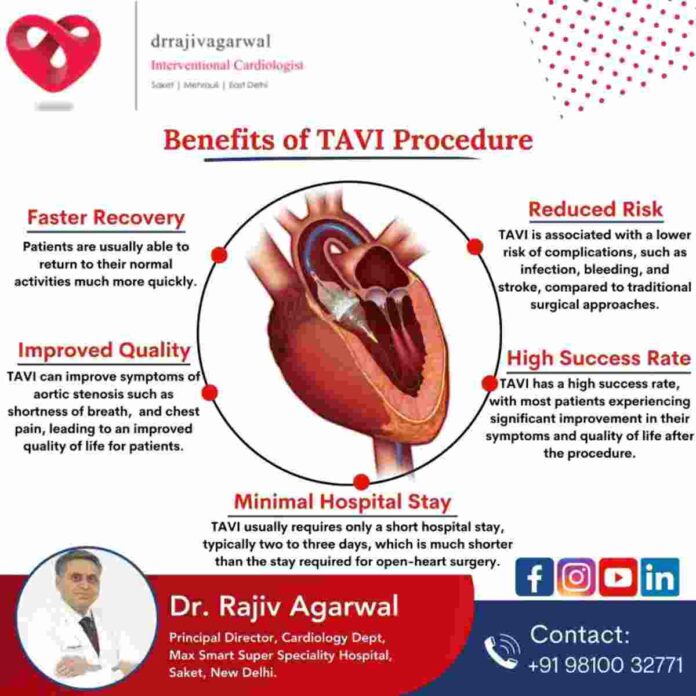Dr. Rajiv Agarwal is a renowned cardiologist with a vast experience of 25+ years in the field of Cardiology. He was a former Associate Professor of Cardiology at AIIMS and now working as a Principal Director and Unit Head-Cardiology at Max Smart Super Speciality Hospital, Saket, New Delhi. Dr. Rajiv Agarwal explains the TAVI Procedure – A new Boon for Heart Valve Problem.
TAVI (Transcatheter aortic valve implantation) is a common procedure that improves the blood flow in our heart by replacing an aortic valve that doesn’t open fully. It can also be called Transcatheter aortic valve replacement (TAVR). Transcatheter aortic valve replacement is a common, mostly painless procedure.
Why would we need it?
If we have a condition called aortic stenosis, our aortic valve doesn’t open fully. Aortic valve stenosis is a thickening and narrowing of the valve between the heart’s main pumping chamber and the body’s main artery, called the aorta. The narrowing creates a smaller opening for blood to pass through. This reduces or blocks blood flow from the heart to the rest of the body. Our heart valves play an important role in keeping blood flowing through our hearts. The aortic valve opens to let blood flow from our heart to our aorta. The aorta is the big vessel supplying our body with oxygen-rich blood. If we have severe aortic stenosis, we may need to replace our aortic valve.
Procedure
TAVI (Transcatheter Aortic Valve Implantation) is a minimally invasive procedure used to replace a diseased aortic valve with a prosthetic valve. A thin, flexible tube (catheter) is inserted through a small incision in your leg or chest and guided to your heart. The new valve collapses within the catheter and is then expanded inside the old valve, effectively pushing it aside and taking over its function, typically without the need for open-heart surgery. A TAVI procedure normally takes between one and two hours, although it can take longer in some cases. We’ll usually be awake during the procedure and be given sedation and local anesthetic. Most people go home 1 to 2 days after a TAVI procedure.
Benefits
The benefits and risks of TAVI are different for everyone and depend on the seriousness of your aortic stenosis, your age, and your overall health. The benefits of TAVI can include relief from pain (if we have angina), breathlessness, tiredness, dizziness, and fainting. Patients can get more energy with better blood flow through the heart, everyday tasks and physical activities become easier and more enjoyable, better mental health, and reduced risk of heart failure and death.
Risks
The risk of TAVI varies depending on the patient’s health factors. The risks are generally lower in patients who are younger and healthier. The risks of TAVI are Bleeding, Stroke, Infection, New heart block, Aortic regurgitation, and heart attack during the procedure, irregular heart rhythm, and kidney problems for the first few days.
More research is needed before we can say for certain how long TAVI valves typically last. For most people, many (five to six) years after a TAVI procedure, their TAVI valve will still be in good condition. This will likely improve as techniques and technology evolve.
TAVI was originally used as an alternative to heart valve surgery for people who weren’t well enough to have open heart surgery to replace their aortic valves. But TAVI is now being used for people at lower risk of complications from heart surgery because research is showing it’s at least as effective as heart valve surgery after one year. TAVI is also showing signs of working over a longer period, but more research is needed before it becomes the first choice for patients with severe aortic stenosis. In most cases, people find their symptoms get better after a TAVI procedure and they can do more in their daily lives. A smaller number of people may have complications after a TAVI procedure. The risk varies depending on our overall health and our heart condition.
Learn more – https://www.drrajivagarwal.in/percutaneous-valve-implantation-including-tavi.html


